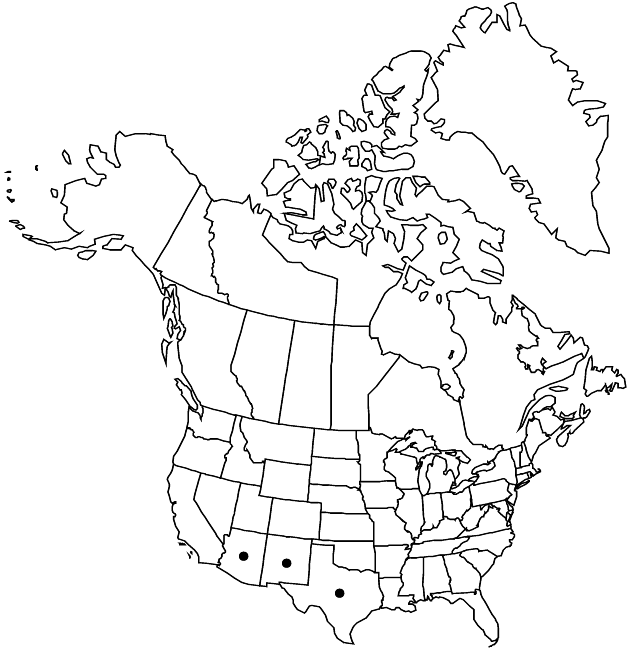Heliopsis parvifolia
Smithsonian Contr. Knowl. 5(6): 86. 1853.
Perennials, 30–50(–80) cm. Aerial stems (from ± erect caudices) 1–10+, stramineous to reddish, glabrous or sparingly hairy. Leaf blades deltate-lanceolate, (1.5–)3–6 × 0.8–3 cm, margins irregularly dentate to subentire (proximal teeth larger), apices acuminate to obtuse, faces sparsely pubescent to glabrescent. Heads 1–10+. Peduncles (6–)15–30 cm. Involucres 12–20 mm diam. Phyllaries densely pubescent on margins and apices, abaxial faces glabrescent. Paleae lanceolate to oblong, apices acuminate, faces glabrous. Ray florets 9–11; corollas golden yellow (young) to pale yellow (old), laminae (1–)2–3 cm × 5–14 mm. Disc florets 8–50+; corollas greenish yellow to yellow-brown (lobes brighter than tubes), 3–4.5 mm, glabrous. Cypselae 4.5–5 mm, glabrous, rugulose to subtuberculate; pappi 0. 2n = 28.
Phenology: Flowering late spring–early fall.
Habitat: Open, rocky mountain slopes, canyons
Elevation: 1200–2500 m
Distribution

Ariz., N.Mex., Tex., Mexico (Chihuahua, Coahuila, Durango, Sonora, Tamaulipas).
Discussion
Selected References
None.